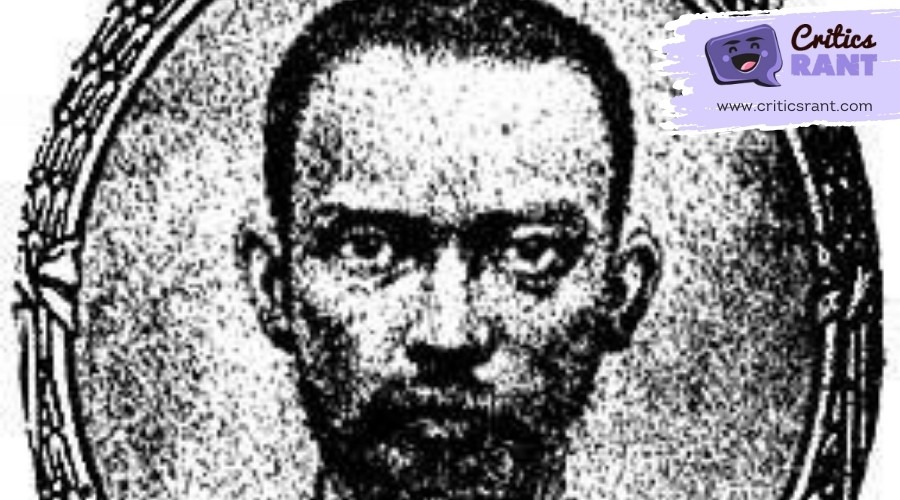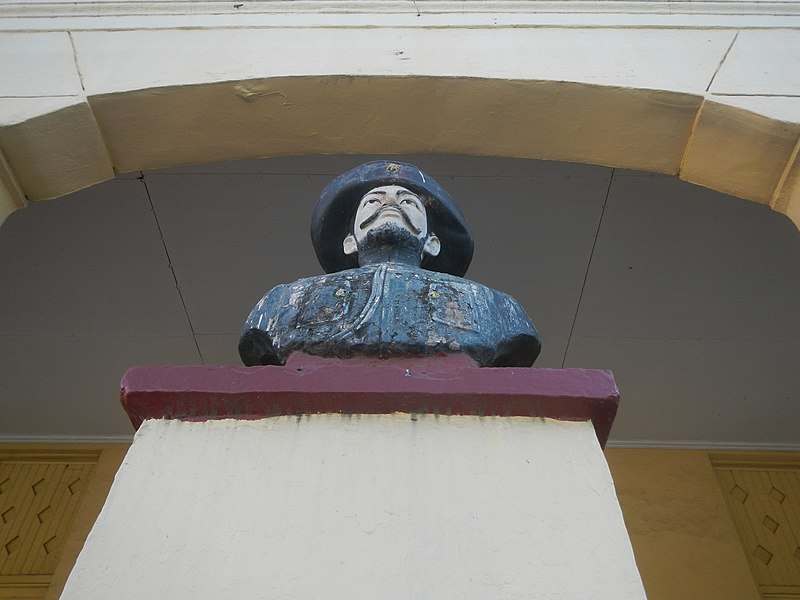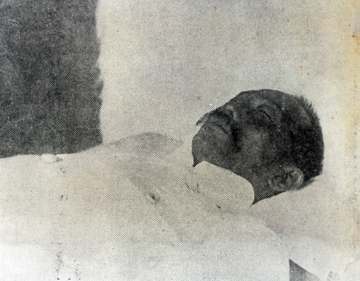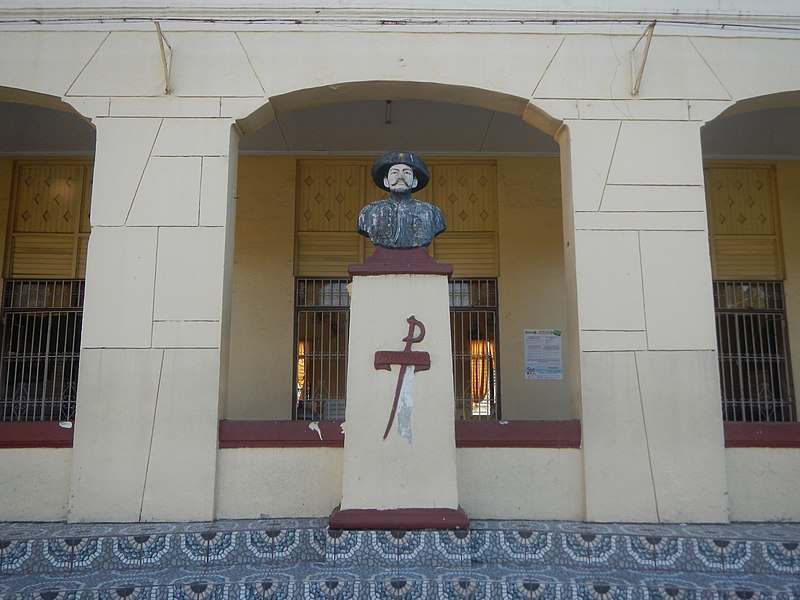Miguel Malvar stands as a pivotal figure in Philippine history, embodying the spirit of resistance and nationalism during two critical junctures: the Philippine Revolution and the subsequent Philippine-American War. Born in 1865 in Batangas, Malvar was not only a military leader but also a dedicated family man and a respected community figure. His rise from a local farmer to a general in the revolutionary forces against Spain and later against American colonization marks him as one of the Philippines’ most courageous and influential heroes.
This article explores the life and legacy of General Miguel Malvar, delving into his strategic contributions to the Philippines’ fight for independence, his personal sacrifices for his country, and the enduring impact of his leadership on Filipino identity and national pride.
Early Life and Background
Miguel Malvar was born on September 27, 1865, in the town of Santo Tomas, Batangas, a province known for its significant role in Philippine revolutionary history. The son of Maximo Malvar and Tiburcia Carpio, Miguel grew up in a rural setting where agriculture played a central role in daily life and the local economy. This early exposure to farming would later influence his understanding of the land and its people, which were crucial elements in his military strategies.
Education and Early Endeavors
Malvar’s education was foundational yet robust for the time, consisting of basic literacy and numeracy acquired at the local primary school. Demonstrative of his early leadership and initiative, Miguel expanded his knowledge through self-education, a trait that prepared him for both business and combat challenges. He had a revolutionary classmate during his time at the private school he attended—none other than Apolinario Mabini. It’s likely that some of Mabini’s ideals influenced Miguel Malvar.
Despite the constraints of his formal schooling, Malvar was a voracious learner, particularly interested in military science and civic affairs, which later informed his tactical decisions during the revolutionary period.
Family Influence and Civic Engagement
Family life was a cornerstone of Malvar’s development. His marriage to Paula Maloles in 1889 resulted in a large family of thirteen children, grounding him in values of responsibility and care. The strong familial bonds he nurtured provided a stable support system throughout his military and political career.
Before his involvement in the broader nationalistic movements, Malvar was active in his community. He held various local positions, including gobernadorcillo (municipal governor), which involved managing local affairs and mediating disputes. These roles not only elevated his standing in the community but also sharpened his administrative skills and deepened his commitment to public service.
Role in the Philippine Revolution
As the struggle for Philippine independence from Spanish rule intensified, Miguel Malvar’s leadership qualities and his deep-seated commitment to his country’s freedom propelled him into a significant role in the Philippine Revolution. Joining the Katipunan, the secret society founded by Andres Bonifacio that spearheaded the revolution, Malvar quickly rose through the ranks due to his strategic acumen and organizational skills.
Military Leadership and Strategy
Malvar’s military involvement began in earnest in 1896, shortly after the outbreak of the revolution. He was instrumental in organizing guerrilla units in Batangas and nearby provinces, leveraging his deep understanding of the local terrain and social structure to establish a robust revolutionary network. His strategic approach often involved:
- Mobilizing local support: Malvar was adept at rallying the locals, gaining support not just from combatants but also from non-combatants who provided food, information, and other logistics.
- Guerrilla tactics: Understanding the limitations of his forces compared to the better-equipped Spanish army, Malvar employed guerrilla tactics that emphasized mobility, surprise attacks, and tactical retreats.
Key Battles
During the revolution, Malvar led several key battles that underscored his capabilities as a military leader. His leadership in the battles at San Francisco de Malabon and elsewhere showcased his ability to coordinate large-scale operations against better-armed opponents. These battles were critical in maintaining Filipino morale and disrupting Spanish operations.
Miguel Malvar collaborated closely with General Emilio Aguinaldo and General Paciano Rizal, the respective leaders of the revolutionary forces in Cavite and Laguna. In 1897, just a year into the Philippine Revolution, a pivotal moment occurred when Malvar’s senior officer, General Edilberto Evangelista, was killed at the Battle of Zapote Bridge. This tragic event led to Malvar’s succession as general.
Diplomacy and Governance
Beyond the battlefield, Malvar also played a crucial role in the administrative and diplomatic arenas. He served as a military governor in Batangas, where he was responsible for maintaining order, managing resources, and upholding the revolutionary government’s decrees. His governance was marked by efforts to sustain the local economy and ensure the welfare of his people during the tumultuous times of the revolution.
The Philippine-American War
Following the conclusion of the Spanish-American War, the Philippines found itself under the rule of another foreign power—the United States. This transition sparked the Philippine-American War, as Filipino revolutionaries, including Miguel Malvar, continued their fight for true independence. Malvar’s role during this conflict was crucial, as he took up the mantle of leadership after the capture of Emilio Aguinaldo in 1901, becoming one of the last Filipino generals to persist in the struggle.
Leadership and Strategy
As the commander of revolutionary forces in Batangas and neighboring regions, Malvar orchestrated a fierce resistance against American troops. His approach involved several key strategies:
- Guerrilla warfare: Continuing the tactics developed during the Philippine Revolution, Malvar adapted guerrilla warfare methods to combat the better-equipped American forces, using the rugged terrains of Batangas to his advantage.
- Mobilization of resources: Malvar was adept at mobilizing local resources for the war effort, including food, intelligence, and manpower, sustaining the resistance under increasingly difficult conditions.
- Psychological warfare: Understanding the impact of morale, Malvar also engaged in psychological warfare aimed at both uplifting the spirits of his troops and undermining those of his enemies.
Major Campaigns and Battles
Under Malvar’s leadership, Filipino forces engaged in numerous skirmishes and battles against American troops. One notable strategy was the system of trenches and fortifications he established, which were used effectively to delay American advances and inflict significant casualties. His ability to sustain a prolonged military campaign under challenging circumstances is a testament to his leadership and tactical acumen.
Challenges and Surrender
The Philippine-American War presented numerous challenges for Malvar and his forces. The American strategy of reconcentration, which involved relocating civilians to designated zones where they could be controlled, severely disrupted local support networks and increased the hardship for the civilian population. The toll on resources and morale was immense.
After the capture of General Emilio Aguinaldo and the surrender of General Trias, General Miguel Malvar ascended to the presidency of the Philippine Republic, following the established line of succession. However, in 1902, recognizing the unsustainable cost of continued conflict on his people, and facing dwindling supplies and support, Malvar made the difficult decision to surrender. His surrender marked one of the final chapters in the Philippine-American War, bringing an end to major hostilities, although sporadic resistance continued.
Capture and Life Afterward
After a relentless campaign against American forces, General Miguel Malvar faced insurmountable challenges by early 1902. His decision to surrender on April 16, 1902, was motivated by a combination of factors, including the dire humanitarian situation of his people, the effectiveness of American counter-insurgency tactics, and the depletion of his resources. Malvar’s surrender was conducted with dignity, ensuring the safety and welfare of his men and the civilian population.
Post-Surrender Activities
Following his surrender, Malvar returned to his home province of Batangas, where he focused on rebuilding his community and helping his fellow countrymen recover from the devastation of the war. Despite the initial distrust from American authorities, he gradually gained recognition as a peacemaker and a leader committed to the reconstruction of the nation.
Civic Engagement and Legacy
Malvar devoted the remainder of his life to public service and civic engagement, participating in various community projects and promoting agriculture, which he believed was the backbone of the nation’s economy. His efforts were pivotal in helping to stabilize the region and improve the livelihoods of the local population. Malvar also became involved in the local government, where he used his experience and leadership skills to advocate for reforms and aid in the development of Batangas.
- Healthcare Initiatives: Understanding the importance of health in recovery and development, Malvar supported efforts to improve healthcare services and facilities in his community.
- Education Advocacy: He was a strong proponent of education, believing it crucial for the future of the Philippines. Malvar supported the establishment of schools and educational programs to ensure that future generations would be better equipped to lead the country.
Personal Life and Death
Throughout his post-war life, Malvar remained a respected figure in his community and a devoted family man. His later years were marked by a quieter, though no less impactful, presence in public affairs. Miguel Malvar passed away on October 13, 1911, leaving behind a legacy characterized by his relentless pursuit of freedom and justice for his country, as well as his commitment to peace and development in the post-war era.
Malvar’s life after the war underscores the complexities of the transition from a military leader to a civic figure, illustrating his deep-rooted commitment to his nation’s welfare beyond just its immediate independence. His contributions continue to be celebrated in the Philippines, where he is remembered not only as a military strategist but also as a visionary in peace and national development.
Legacy and Commemoration
General Miguel Malvar’s contributions to Philippine history extend far beyond his military endeavors, leaving a legacy marked by his deep commitment to national sovereignty and civic responsibility. His life and work have been commemorated in various forms, reflecting his enduring influence on Filipino culture and national identity.
Impact on Philippine Independence and Identity
Malvar’s role in both the Philippine Revolution and the Philippine-American War has cemented his status as a national hero. His strategies and leadership not only challenged colonial powers but also inspired a sense of unity and resistance among Filipinos, contributing significantly to the national narrative of struggle and perseverance for independence.
Memorials and Statues
- Monuments: Numerous statues and monuments have been erected in Malvar’s honor across the Philippines, particularly in Batangas. These statues serve as lasting reminders of his sacrifices and leadership.
- The Malvar Museum: Located in Santo Tomas, Batangas, the museum is dedicated to Malvar and houses various artifacts and personal belongings of the general. It serves as an educational resource, offering insights into his life and the broader context of the Philippine struggles for independence.
Places Named in His Honor
- General Malvar Street: Many cities and municipalities in the Philippines have named major streets after Malvar, symbolizing his path-breaking role in the nation’s history.
- Malvar, Batangas: A municipality in Batangas was renamed in his honor, reflecting the deep respect and admiration held by the local community for their native son.
Cultural Portrayals
Malvar’s life and heroism have been the subject of various cultural portrayals, including films, literature, and educational materials. These portrayals help perpetuate his memory and introduce his significant role in Philippine history to new generations.
Educational Influence
Malvar’s dedication to education and civic duty has inspired educational initiatives and curricula in Philippine schools. His emphasis on the importance of education for national development continues to influence educational policies and practices.
Conclusion
General Miguel Malvar’s legacy as a key figure in the Philippine struggle for independence continues to resonate across the nation. Celebrated as a hero, his dedication to his country’s sovereignty and his commitment to civic duty have left an indelible mark on the hearts and minds of Filipinos. Through monuments, educational efforts, and cultural recognition, Malvar’s influence endures, reminding us of the resilience and courage needed to forge a nation’s identity and secure its future. His story remains a source of inspiration, embodying the enduring spirit of the Filipino people.
If you’re keen on exploring the lives of famous historical figures, our extensive catalog has plenty to offer. For instance, you might enjoy our post on the personality of Benjamin Harrison. Alternatively, if you’re interested in the treaty that sparked the Filipino-American War, you can read more about it here.




